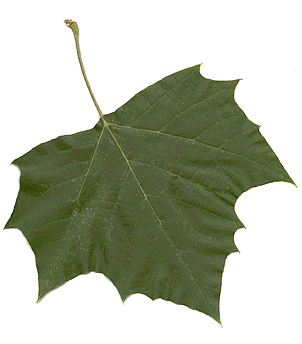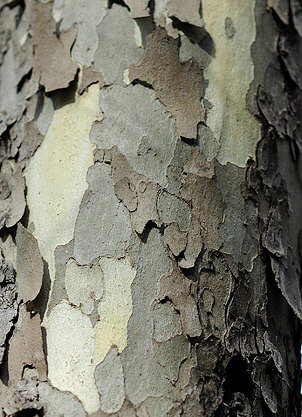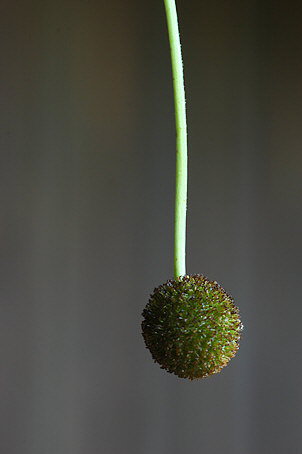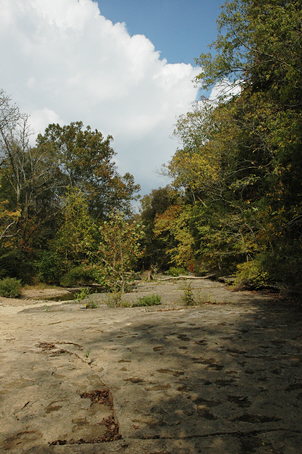| |
|
| |
 |
| |
American Sycamore Leaf |
Identification:
The fall color of the American Sycamore is a bronzy brown. The
leaves are alternate,
simple and 5 inches to 8 inches long, green
and shiny above, whitish and hairy below.
Venation is
palmate.
The base of the petiole completely encloses the bud.
| |
|
 |
|
|
American Sycamore Bark |
The bark of the American Sycamore is
quite distinctive and beautiful in all seasons. The bark is
reddish-brown to gray when young, and thin and flaky. As the
outer bark flakes off, it exposes the white or greenish inner bark.
The twigs of the American Sycamore
are brown to orange-brown, smooth and shiny. The stipule scar
encloses the bud.
| |
|
| |
 |
| |
American Sycamore Fruit |
The fruit is a spherical ball of
achenes, about 1 inch in diameter, on a single stalk 3 inches to 6
inches long. The fruits often persist through the winter.
Other Uses
and Lore:
John James Audubon once wrote about observing
thousands of chimney swifts descending into a huge hollow sycamore
to use it as a roost. He returned early the following morning to
watch them exit. The swifts came pouring out in a black continuous
stream that lasted more than thirty minutes. Many
other species of wildlife use the cavities in these
trees, including many mammals.
Eastern screech owls roost and nest quite often in the cavities of
sycamores found along streams. The seeds were a favorite of the now
extinct Carolina parakeet.
The wood’s spiral grain makes it difficult to split,
and it is quite tough. It has been used for butcher’s blocks, cigar
boxes, shipping crates. It has also been used in musical
instruments and panels for Pullman cars in passenger trains.
The
Stones River
 |
| West Fork of
the Stones River |
While you're
here, stop for a moment and take a look at the Stones River below
Station Twelve. There are many American Sycamores along the
river and the water attracts many animals. Eastern
Screech-Owls often roost in the cavities in American Sycamores and
sometimes use them for nests in the spring. Neotropical
migrants can often be seen in the shrubby edges and if you're lucky
you may see an accipiter like a Sharp-shinned Hawk flying along the
river in hopes of flushing a small bird for a meal.
There are benches and tables at the overlook, and it is a pleasant
place to have a snack or lunch. To return to the start point,
just retrace your steps.
|